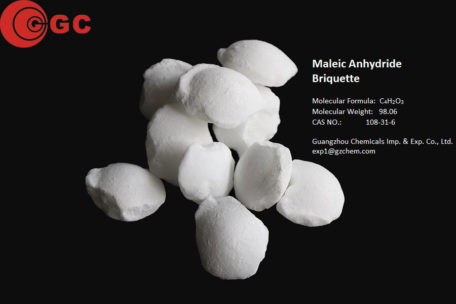Introduction
Compared with the previous price highs, the price of maleic anhydride has stabilized and rebounded after only a decline of 200-400 yuan/ton recently, showing strong resistance to falling. Behind it, it is a manifestation of the increase in the concentration of the entire industry chain, and it will be further improved with the commissioning of large-scale projects.


The new round of decline in the market started at the end of July to an abrupt end last week. Except for the short duration of the market, compared with the mainstream ex-factory price of 5900-6000 yuan/ton before the decline, the cumulative decline in this round was only 200 -400 yuan/ton, there is still a certain gap with the psychological price expected by many market participants waiting for bargaining operations. At the beginning of this decline, the price of maleic anhydride has been reduced by only 50 yuan/ton, which has caused them to complain about the price adjustment of maleic anhydride manufacturers like “squeezing toothpaste”, and the stabilization and rebound of maleic anhydride prices since last week has made them lament. “Maleic anhydride is really hard to fall.”
Is maleic anhydride really resilient? If we extend the time to the entire 2020, we will find that in addition to the big ups and downs from March to April, the fluctuation of domestic maleic anhydride after May is indeed limited. From the perspective of domestic mainstream ex-factory prices, it will generally remain at 5300- The 6,000 yuan/ton range hovered, and no further breakthrough was formed at the lower and higher points. From this point of view, there is a factual basis for saying that maleic anhydride resists falls. Deeply looking into the background, in addition to the stable cost side trend, it is believed that this is also a manifestation of the high concentration of production-distribution-terminal links in recent years.
The small number of production companies and the concentration of production capacity are a major feature that distinguishes the maleic anhydride market from other markets. After years of market adjustments, especially after the delisting of a large number of small and medium-sized benzene production enterprises, the concentration of the domestic maleic anhydride market has further increased. According to statistics, as of the end of July 2020, there are currently 19 domestic maleic anhydride manufacturers, with a cumulative production capacity of 991,500 tons. Among them, Qixiang Tengda, Yizheng Chemical Fiber, Jiangning Chemical, Shengyuan Technology, Yabang Chemical and other TOP5 companies have a production capacity of 580,000 tons, accounting for 58.5%, and the remaining 14 production companies have a production capacity of only 41.5%.
Large-scale production enterprises have strong financial and technical strength, strong ability to resist risks, less pollutant emissions and complete treatment facilities, and are less affected by policies such as environmental protection. They have formed greater advantages for small and medium-sized enterprises in terms of production stability. This is particularly evident under the impact of this year’s epidemic. In terms of output, domestic maleic anhydride output reached 511,200 tons from January to July 2020, a year-on-year decrease of 3.15%. Among them, the output of TOP5 enterprises reached 316,200 tons, accounting for 61.85% of the output, and the output of the remaining 14 manufacturing enterprises only accounted for 38.15%.
The concentration of maleic anhydride market circulation cannot be underestimated. According to statistics, by 2019, the trade volume of the top four maleic anhydride large-scale trading companies represented by Zhejiang Hongzi Technology will reach 330,000 tons, which is in the total domestic maleic anhydride trade volume. The proportion has exceeded 70%.
The concentration of the downstream unsaturated resin market is also in a rapid increase. According to statistics, the output of large unsaturated resin companies with an annual capacity of more than 100,000 tons in 2019 accounted for more than 70% of the total output, and this number will likely exceed 80% under the impact of this year’s epidemic.
It is believed that the increase in industrial concentration has further enhanced the ability of large enterprises to control the market. Even in the overall situation of oversupply of maleic anhydride in China, a few large-scale production and trading companies can control the circulation of more than half of the sources of goods in the market by jointly controlling the pace of production and delivery, so that the market price can deviate from the normal in the short term Constraints on the supply and demand structure can also cause a phased shortage of supply in the falling market to complete the price stop-stabilization-rebound trilogy. The increase in the concentration of downstream resin companies has ensured the rapid recovery of the unsaturated resin market. According to statistics, the domestic output of unsaturated resin in July was 176,100 tons, which was unchanged from the previous month but increased by 19.88% year-on-year. At the same time, large downstream enterprises have a large and rigid demand for maleic anhydride, which has played a better supporting role in the maleic anhydride market, and to a certain extent also reduced the possibility of maleic anhydride prices falling below new lows.
In the long run, the realization of large-scale and large-scale production equipment is a clear trend in the entire chemical market. In the next five years, large-scale projects in the domestic maleic anhydride and unsaturated resin markets will continue to be put into production, and there is still room for improvement in industrial concentration. From distribution channels to mainstream items, the market full of “giants” will bring profound changes to all aspects of the maleic anhydride market, and maleic anhydride’s “resistance” properties may be further strengthened.